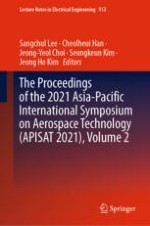This proceeding comprises peer-reviewed papers of the 2021 Asia-Pacific International Symposium on Aerospace Technology (APISAT 2021), held from 15-17 November 2021 in Jeju, South Korea. This book deals with various themes on computational fluid dynamics, wind tunnel testing, flow visualization, UAV design, flight simulation, satellite attitude control, aeroelasticity and control, combustion analysis, fuel injection, cooling systems, spacecraft propulsion and so forth. So, this book can be very helpful not only for the researchers of universities and academic institutes, but also for the industry engineers who are interested in the current and future advanced topics in aerospace technology.
